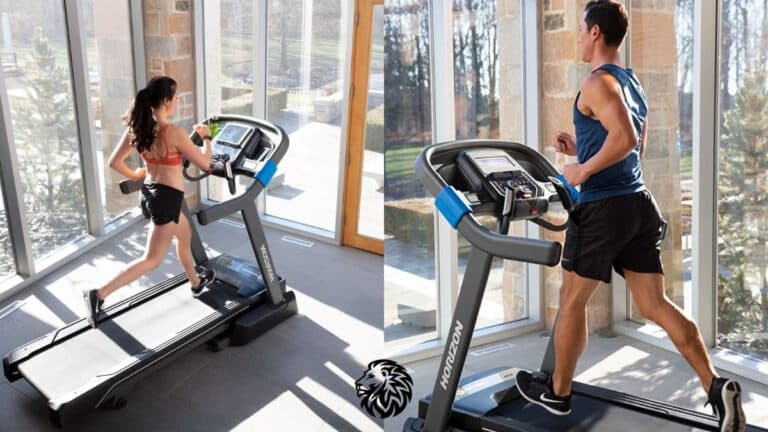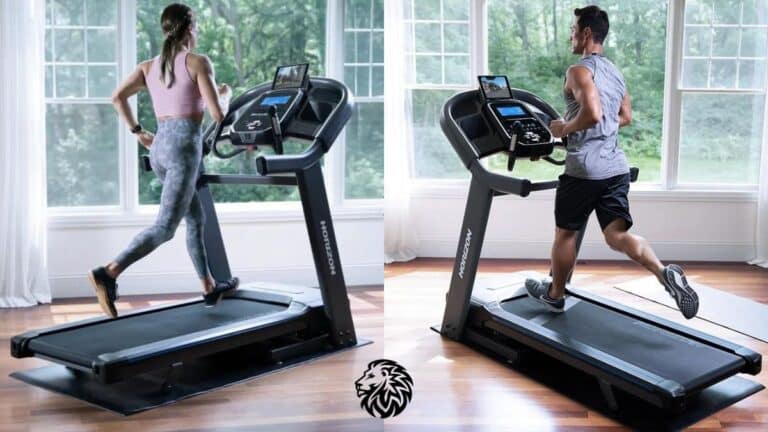Endurance is a critical element of fitness. Your endurance can dictate how long a person can sustain physical activity before fatigue sets in. One excellent method to ramp up your endurance is by incorporating treadmill running workouts into your routine. The beauty of training on a treadmill lies in its controlled environment. You can tweak your speed, incline, and other settings to fit your unique workout needs. Plus, treadmills are the perfect setup for a range of workouts such as interval training, long runs at a steady pace, or simulated hill workouts—all of which are top-notch strategies for enhancing endurance.
This guide offers a rundown of five specific treadmill running workouts, each designed with the primary goal of increasing your endurance. Each workout has its own role, focusing on different elements of your running fitness, and together they make up a well-rounded training regimen to boost your overall stamina. Regardless of where you’re starting from in terms of fitness level or endurance, these workouts are adjustable to your specific needs, putting your endurance goals well within your reach. Now, here are the five treadmill running workouts to boost your endurance!

5 Treadmill Running Workouts to Boost Your Endurance
Workout 1: Steady-State Long Runs
Description of the Workout:
Steady-state long runs are all about maintaining a consistent, moderate pace for an extended period of time. Unlike interval training where you oscillate between high and low intensity, here you remain in a “steady state” of exertion throughout your run.
For beginners, a steady-state long run might start at around 20 minutes. For more advanced runners, these runs could extend to over an hour. The pace should be comfortable enough that you could maintain a conversation (often referred to as “conversational pace”). You’re not aiming to run at your maximum speed; rather, you’re aiming for a sustainable, consistent pace.
A sample treadmill workout could look like this:
- Warm-up: 5-10 minutes of brisk walking or light jogging.
- Main set: 20-60 minutes (depending on your current endurance level) at a comfortable, steady pace. Aim for a pace where you’re exerting yourself but could still maintain a conversation.
- Cool-down: 5-10 minutes of light jogging or brisk walking, gradually decreasing your pace to a walk.
How this Workout Helps Improve Endurance:
Steady-state long runs play a crucial role in endurance training because they help to increase your aerobic capacity. This is your body’s ability to use oxygen to fuel your muscles over a prolonged period.
During these workouts your body learns to burn fat more efficiently for fuel. Thus preserving its glycogen stores for longer periods. This adaptation is crucial for endurance as glycogen, the body’s preferred source of energy during high-intensity exercise, is stored in limited quantities.
Additionally, long runs also help improve your mental endurance and toughness, as maintaining a steady pace for a long duration requires mental focus and resilience.
Remember, these runs should be increased gradually to avoid injury (no more than 10% per week). This also allows your body to adapt to the increased workload.
Workout 2: Interval Training
Description of the Workout:
In interval training, high-intensity and low-intensity exercise sessions are alternated. An illustration of an interval workout might be as follows: following a warm-up, run vigorously for one minute (at about 80–90% of your maximum effort), then recover with a slow jog or walk for two minutes. Follow each cycle with a cool-down period after 20 to 30 minutes total.
The intensity and duration of the high-intensity intervals and the recovery periods can be adjusted based on your fitness level and goals. As your endurance improves, you can lengthen the high-intensity intervals or shorten the recovery periods.
How this Workout Helps Improve Endurance:
Interval training improves both your aerobic (endurance) and anaerobic (strength and power) fitness. The high-intensity intervals push your body to work at near maximum effort. This increases the maximum amount of oxygen your body can use during exercise.
The recovery periods help train your body to recover more quickly after exertion, removing waste products from the muscles and restoring energy supplies. Your body will eventually be able to handle longer bursts of intense exercise as a result.
Additionally, interval training can be a time-effective way to improve your endurance and helps break up the monotony of protracted steady-state runs. It’s important to keep in mind that due to the intensity of these workouts, they should be added to your training program in addition to other types of runs rather than taking the place of them entirely.
Workout 3: Hill Reps
Description of the Workout:
Hill Reps, or hill repeats, involve running up an incline at a high effort, followed by a recovery period while you walk or jog back down. When using a treadmill, you can simulate hills by increasing the incline. An example workout might look like this: after a warm-up, set your treadmill to an incline that challenges you but still allows you to maintain good form. Run up this ‘hill’ for 1-2 minutes at about 80-90% of your maximum effort, then decrease the incline and recover with a slow jog or walk for 2-3 minutes. Repeat this cycle for a total of 20-30 minutes, followed by a cool-down period.
The steepness of the incline and the duration of the hill reps can be adjusted based on your fitness level and goals.
How this Workout Helps Improve Endurance:
Hill reps are an excellent way to build strength and power, which in turn improves your running economy – the amount of oxygen you use to run at a particular pace. The better your running economy, the longer you can sustain a given pace, which enhances your endurance.
Running uphill is a form of resistance training that targets your glutes, quads, hamstrings, and calves. Strengthening these muscles not only boosts your speed and power but also helps protect against injuries.
The added challenge of running uphill also pushes your cardiovascular system, leading to improvements in your aerobic fitness and overall endurance. As your body becomes more efficient at running uphill, you’ll also find that running on flat ground becomes easier.
Hill reps can be intense, so they should be incorporated into your training program alongside other types of runs, and not every running session should involve hill reps.
Workout 4: Fartlek Runs
Description of the Workout:
Fartlek, a Swedish term meaning “speed play,” is a form of interval training that blends continuous training with speed work. Unlike traditional interval training that follows a strict structure, Fartlek runs are more flexible and involve varying your pace throughout your run based on how you feel.
An example of a Fartlek workout on a treadmill might look like this: after a warm-up, run at a moderate pace for 5 minutes, then increase your speed to a hard pace for 2 minutes. Follow this with a 3-minute easy jog. Then, you might want to sprint for 30 seconds, followed by a 1-minute walk. The goal is to mix up your intensities and durations based on your own judgment and feelings of exertion. Your total workout could range from 20-40 minutes depending on your current fitness level.
How this Workout Helps Improve Endurance:
Fartlek runs are a great way to make your body more adaptable to varying intensities, which is crucial for endurance. These workouts help improve both your aerobic and anaerobic systems, making you capable of handling different speeds and inclines without becoming overly fatigued.
The free-flowing nature of Fartlek runs can also make your workouts more enjoyable, which can be beneficial for your motivation and overall adherence to your training plan.
By incorporating different running speeds and intensities, you train your body to become more efficient at various paces. This can improve your ability to maintain faster paces for longer periods, boosting your overall running endurance.
Workout 5: Progressive Runs
Description of the Workout:
Progressive runs, also known as negative split runs, start at a comfortable, easy pace and gradually increase in speed until you’re running at a challenging pace towards the end. On a treadmill, this could look like starting your run at a comfortable pace for the first 10 minutes, then gradually increasing your speed every 5-10 minutes thereafter.
The increase in pace doesn’t have to be dramatic; even small increases are effective. The key is to finish your run at a noticeably faster pace than when you started. A typical progressive run might last 30-60 minutes, depending on your fitness level.
How this Workout Helps Improve Endurance:
Progressive runs help to improve your endurance in several ways. First, by starting slowly, you conserve energy and allow your body to warm up effectively. As you increase your pace, you challenge your aerobic system, which over time, can lead to improved cardiovascular efficiency.
Secondly, these workouts teach you to effectively manage your pace, a crucial skill in long-distance running. By learning how to gradually increase your speed, you can avoid going out too fast in races or longer runs, which can lead to premature fatigue.
Finally, finishing your run at a high effort helps to improve your mental strength and toughness, as the final part of a race or long run is typically the hardest. By regularly practicing pushing yourself when you’re already fatigued, you can boost your ability to endure in challenging situations, ultimately enhancing your overall endurance.

Tips for Maximizing Your Treadmill Workouts
Importance of Warming Up and Cooling Down
Launching into any treadmill workout without warming up is like jumping into a pool without checking the water temperature – you might get a shock! Dedicate 5-10 minutes at the beginning of your workout for a gentle jog or brisk walk. This helps prep your muscles for what’s coming, stimulates circulation, and can stave off injuries.
The same care should be taken post-workout. A cool-down phase allows your heart rate and blood pressure to gradually return to their resting state, reducing chances of dizziness or fainting after an intense session. It also aids in clearing out waste products from your muscles, potentially lessening post-workout aches.
The Role of Proper Form and Posture
Proper running form and posture can improve the efficiency of your runs and reduce the risk of injury. Keep your head up, look straight ahead, and maintain a slight lean forward from your ankles, not your waist. Your arms should swing naturally with each stride. Remember to avoid overstriding; landing on your heel with your foot well ahead of your body’s center of gravity can increase the impact on your joints.
The Significance of Consistency and Progression in Training
Building up your endurance isn’t an overnight task; it’s a marathon, not a sprint. It calls for steady, gradual training over time. Try your best to stick to your training plan, mixing different types of runs throughout the week for variety.
Adopt a progressive approach to your training. As your body gets used to the workload, incrementally up the ante—intensity, duration, or frequency of your workouts. But remember the golden rule: never increase your total weekly mileage by more than 10% a week to avoid overtraining and injuries.
Need for Adequate Hydration and Nutrition
Staying hydrated is important for all workouts, including treadmill runs. Dehydration can reduce your performance and may lead to fatigue more quickly. If you’re running for longer than an hour, consider a sports drink that contains electrolytes to replace what you lose through sweat.
Good nutrition also plays a role in your performance and recovery. Ensure your diet includes an appropriate balance of carbohydrates for energy, protein for muscle recovery, and healthy fats for satiety.
Suggestions for Avoiding Common Treadmill Injuries
Running on a treadmill can lead to repetitive stress injuries if not done correctly. Ensure you’re wearing appropriate running shoes that offer good support. Mix up your treadmill workouts with cross-training activities to give your running muscles a break, and make time for strength training to build the muscles that support your running. Above all, listen to your body. If something doesn’t feel right, pause, and if need be, consult a health or fitness professional.

The Role of Rest and Recovery in Endurance Training
Explanation of the Significance of Rest Days for Muscle Recovery
In the quest for improved endurance, it’s easy to forget the importance of rest. However, rest days are crucial for muscle recovery and growth. When you exercise, especially during intense endurance workouts, microscopic tears occur in your muscles. It’s during rest that your body repairs these tears, strengthening and building your muscles in the process. Without adequate rest, you risk overtraining, which can lead to a plateau in your performance, increased risk of injuries, and decreased immune function.
Furthermore, rest days can help prevent mental burnout and keep your motivation high, making them essential for long-term success in your endurance training program.
Tips for Active Recovery and Rest Day Activities
While rest days mean you should take a break from intense endurance workouts, they don’t necessarily mean you have to be completely inactive. Active recovery activities are low-intensity exercises that promote blood flow to the muscles, helping to speed up the recovery process.
Some effective active recovery activities include:
- Walking: A simple, low-impact activity that can help increase blood flow and aid recovery without putting stress on your body.
- Yoga: It can improve flexibility, balance, and strength, and certain poses can also help in muscle recovery.
- Swimming: A full-body, low-impact workout that’s an excellent choice for active recovery.
- Cycling: A leisurely bike ride, either on an actual bike or a stationary one, can promote muscle recovery without the impact of running.
Remember, the key is to take it easy on these days. The goal isn’t to challenge your body with a hard workout, but to aid your recovery so you’re ready for the next intense workout in your endurance training plan.

Conclusion
In this guide, we’ve shared five unique treadmill workouts with the aim to boost your endurance, each focusing on different fitness aspects. Longer, steady-state runs enhance your aerobic fitness and teach your body to efficiently use fat as a fuel source. Interval training pushes your body to operate near its max effort, sharpening both your aerobic and anaerobic fitness. Hill repetitions are a fantastic way to foster strength and power, leading to improved running efficiency. Fartlek runs, which mix up intensities, make your body more versatile, a vital aspect for endurance. Progressive runs, on the other hand, are about pacing – a crucial skill in endurance running.
Adding these workouts to your training routine introduces variety, making your runs both more exciting and more demanding. Whether you’re lacing up your running shoes for the first time or are an old hand at pounding the pavement, these treadmill workouts can be tweaked to suit your fitness level, aiding you in steadily building up your endurance. Remember, endurance training is more about the journey than the destination. Revel in your progress along the way and take pleasure in the process of crafting a healthier, fitter, and more enduring version of yourself.
Frequently Asked Questions
Why do I feel exhausted after a short period on the treadmill?
If you’re feeling exhausted after a short period on the treadmill, it could be due to several reasons. You might be running at a pace that’s too fast for your current fitness level. Try slowing down and focus on running longer rather than faster. It’s also possible that you’re not warming up adequately before starting your workout. Ensure you include 5-10 minutes of light jogging or brisk walking before your main run. Lastly, your exhaustion might be due to dehydration or inadequate nutrition. Make sure you’re properly hydrated before, during, and after your workout.
I’m new to running. How often should I use these treadmill workouts?
If you’re new to running, it’s important to start slow and gradually increase your frequency and duration of running. Start with 2-3 days a week of running, incorporating the different types of workouts discussed in the article. Ensure you have rest days in between to allow your body to recover. As your fitness improves, you can gradually add more running days to your week, but remember not to increase your total weekly mileage by more than 10% each week to avoid injuries.
How can I avoid getting bored during long runs on the treadmill?
Treadmill running can sometimes feel monotonous, especially during long runs. There are several strategies you can use to make your runs more interesting. Try listening to music, podcasts, or audiobooks during your run. You can also watch TV shows or movies. Breaking up your run into smaller segments, changing the speed or incline during your run, or trying different types of workouts like interval training or hill reps can also add variety to your treadmill running and keep you engaged.
Can I do these treadmill workouts if I’m training for a marathon?
Absolutely! These treadmill workouts are a great way to train for a marathon. The steady-state long runs can mimic the long runs you’d do outside, while the interval training can help improve your speed and running economy. Hill reps, if your treadmill has an incline function, can help build strength and power, and prepare you for any hills on your marathon course. Fartlek and progressive runs can also add variety to your training and improve your body’s adaptability to varying intensities. Remember to also include some outdoor runs in your training to adapt to running in different weather conditions and on different surfaces.
Why do I experience stitches or side cramps during my treadmill run?
Stitches or side cramps often result from eating too close to your run, running at a pace that’s too intense, or shallow breathing. Make sure to give yourself at least two hours after a meal before running. Start your workout with a gentle warm-up and gradually increase your pace. Practice deep, rhythmic breathing while running to get more oxygen to your muscles.
How do I make sure I’m maintaining proper form while running on a treadmill?
To maintain proper form while running on a treadmill, keep your head up, looking forward, not down at your feet. Relax your shoulders and keep them level. Let your arms swing naturally at your sides and avoid crossing them in front of your body. Your hands should be relaxed, not clenched. Make sure your strides are natural and comfortable, landing mid-foot, not on your heels.







